Craftsman CanOBD Diagnostic Tool 87702 Owner's Manual
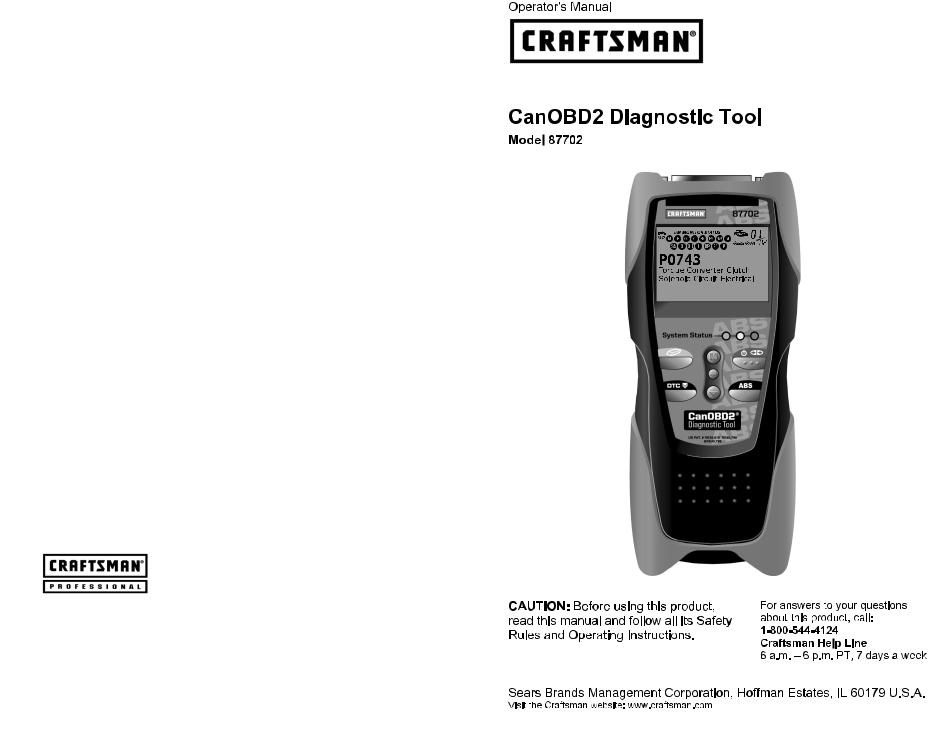

Table of Contents |
|
|
|
INTRODUCTION |
|
|
WHAT IS OBD? ........................................................................ |
1 |
|
YOU CAN DO IT! .............................................................................. |
2 |
|
SAFETY PRECAUTIONS |
|
|
SAFETY FIRST! ........................................................................ |
3 |
|
ABOUT THE DIAGNOSTIC TOOL |
|
|
VEHICLES COVERED ............................................................. |
5 |
|
BATTERY REPLACEMENT ..................................................... |
6 |
|
DIAGNOSTIC TOOL CONTROLS |
|
|
CONTROLS AND INDICATORS ............................................. |
7 |
|
DISPLAY FUNCTIONS ............................................................ |
9 |
|
ONBOARD DIAGNOSTICS |
|
|
COMPUTER ENGINE CONTROLS ......................................... |
11 |
|
DIAGNOSTIC TROUBLE CODES (DTCs) .............................. |
16 |
|
OBD2 MONITORS .................................................................... |
19 |
|
PREPARATION FOR TESTING |
|
|
PRELIMINARY VEHICLE DIAGNOSTIC WORKSHEET ......... |
28 |
|
BEFORE YOU BEGIN .............................................................. |
31 |
|
VEHICLE SERVICE MANUALS ............................................... |
32 |
|
USING THE DIAGNOSTIC TOOL |
|
|
CODE RETRIEVAL PROCEDURE .......................................... |
33 |
|
VIEWING ENHANCED DTCs .................................................. |
39 |
|
VIEWING ABS DTCs ............................................................... |
47 |
|
ERASING DIAGNOSTIC TROUBLE CODES (DTCs) .............. |
49 |
|
ABOUT REPAIRSOLUTIONS® ............................................... |
50 |
|
I/M READINESS TESTING ...................................................... |
51 |
|
ADDITIONAL FUNCTIONS |
|
|
PERFORMING A SYSTEM VOLTAGE CHECK ...................... |
57 |
|
VIEWING VEHICLE INFORMATION ....................................... |
58 |
|
USING THE DTC LIBRARY ..................................................... |
60 |
|
VIEWING THE FIRMWARE VERSION .................................... |
62 |
|
ADJUSTMENTS AND SETTINGS ........................................... |
62 |
|
VIEWING DTCs IN THE TOOL’S MEMORY ........................... |
65 |
|
GENERIC (GLOBAL) OBD2 PID LIST ............................................ |
66 |
|
VEHICLE APPLICATIONS - ABS |
|
|
VEHICLE APPLICATIONS – MAKES COVERED ................... |
71 |
|
GLOSSARY |
|
|
INTRODUCTION ...................................................................... |
72 |
|
GLOSSARY OF TERMS AND ABBREVIATIONS ................... |
72 |
|
WARRANTY AND SERVICING |
|
|
CRAFTSMAN TWO YEAR FULL WARRANTY ....................... |
77 |
|
REPLACEMENT PARTS ......................................................... |
77 |
i |
Craftsman 87702 |
|

Introduction
WHAT IS OBD?
WHAT IS OBD?
The Enhanced CanOBD2 Diagnostic Tool is designed to work on all OBD2 compliant vehicles. All 1996 and newer vehicles (cars, light trucks and SUVs) sold in the United States are OBD2 compliant.
One of the most exciting improvements in the automobile industry was the addition of onboard diagnostics (OBD) on vehicles, or in more
basic terms, the computer that activates the vehicle’s “CHECK ENGINE” light. OBD1 was
designed to monitor manufacturer-specific systems on vehicles built from 1981 to 1995. Then came the development of OBD2, which is
on all 1996 and newer vehicles sold in the U.S. Like its predecessor, OBD2 was adopted as part of a government mandate to lower vehicle emissions. But what makes OBD2 unique is its universal application for all late model cars and trucks - domestic and import. This sophisticated program in the vehicle’s main computer system is designed to detect failures in a range of systems, and can be accessed through a universal OBD2 port, which is usually found under the dashboard. For all OBD systems, if a problem is found, the computer turns on the “CHECK ENGINE” light to warn the driver, and sets a Diagnostic Trouble Code (DTC) to identify where the problem occurred. A special diagnostic tool, such as the Enhanced CanOBD2 Diagnostic Tool, is required to retrieve these codes, which consumers and professionals use as a starting point for repairs.
The Enhanced CanOBD2 Diagnostic Tool provides the additional ability to retrieve enhanced DTCs from most Chrysler/Jeep, Ford/Mazda, GM/Isuzu, Honda/Acura and Toyota/Lexus vehicles, as well as AntiLock Brake System (ABS) DTCs and vehicle information. The types of enhanced data available depends on the vehicle make.
To learn more about vehicle Computer Control Systems and OBD2, see COMPUTER ENGINE CONTROLS on page 15.
Craftsman 87702 |
1 |
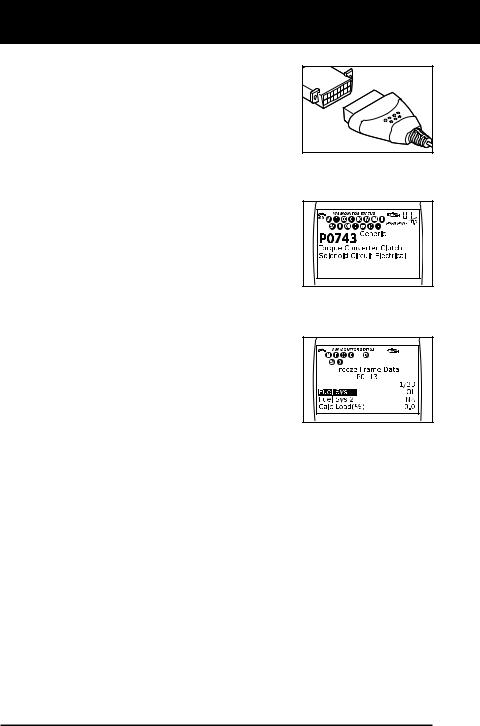
You Can Do It!
EASY TO USE - EASY TO VIEW - EASY TO DEFINE
Easy To Use . . . .
Connect the Diagnostic Tool to the vehicle’s test connector.
Turn the ignition key "On.”
The Diagnostic Tool automatically links to the vehicle’s computer.
Easy To View . . . .
The Diagnostic Tool retrieves stored
codes, Freeze Frame data and System Status.
Codes, I/M Monitor Status and Freeze Frame data are displayed on the Diagnostic Tool’s LCD display screen. System Status is indicated by LED indicators.
Easy To Define . . . .
Read code definitions from the Diagnostic Tool’s LCD display.
View Freeze Frame data.
2 |
Craftsman 87702 |
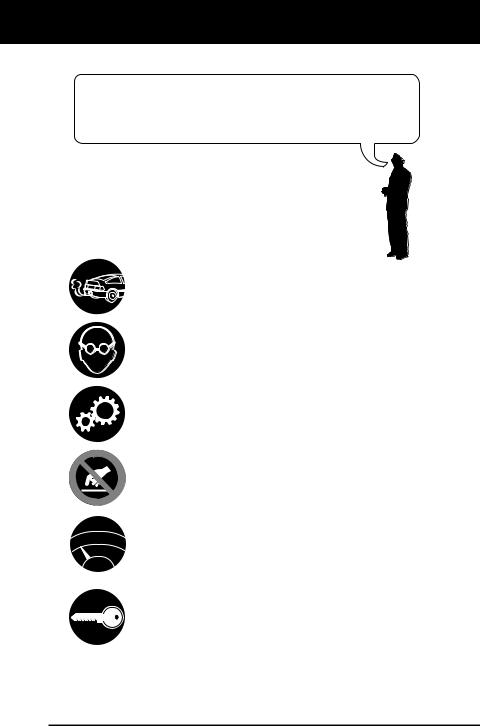
Safety Precautions
SAFETY FIRST!
SAFETY FIRST!
To avoid personal injury, instrument damage and/or damage to your vehicle; do not use the OBD2 Diagnostic Tool before reading this manual.
This manual describes common test procedures used  by experienced service technicians. Many test procedures
by experienced service technicians. Many test procedures 
 require precautions to avoid accidents that can result in
require precautions to avoid accidents that can result in 

 personal injury, and/or damage to your vehicle or test
personal injury, and/or damage to your vehicle or test 
 equipment. Always read your vehicle's service manual and
equipment. Always read your vehicle's service manual and  follow its safety precautions before and during any test or
follow its safety precautions before and during any test or  service procedure. ALWAYS observe the following general
service procedure. ALWAYS observe the following general  safety precautions:
safety precautions: 
PR
ND
L
When an engine is running, it produces carbon monoxide, a toxic and poisonous gas. To prevent serious injury or death from carbon monoxide poisoning, operate the vehicle ONLY in a well-ventilated area.
To protect your eyes from propelled objects as well as hot or caustic liquids, always wear approved safety eye protection.
When an engine is running, many parts (such as the coolant fan, pulleys, fan belt etc.) turn at high speed. To avoid serious injury, always be aware of moving parts. Keep a safe distance from these parts as well as other potentially moving objects.
Engine parts become very hot when the engine is running. To prevent severe burns, avoid contact with hot engine parts.
Before starting an engine for testing or troubleshooting, make sure the parking brake is engaged. Put the transmission in park (for automatic transmission) or neutral (for manual transmission). Block the drive wheels with suitable blocks.
Connecting or disconnecting test equipment when the ignition is ON can damage test equipment and the vehicle's electronic components. Turn the ignition OFF before connecting the Diagnostic Tool to or disconnecting the Diagnostic Tool from the vehicle’s Data Link Connector (DLC).
Craftsman 87702 |
3 |

Safety Precautions
SAFETY FIRST!
To prevent damage to the on-board computer when taking vehicle electrical measurements, always use a digital multimeter with at least 10 MegOhms of impedance.
Fuel and battery vapors are highly flammable. To prevent an explosion, keep all sparks, heated items and open flames away from the battery and fuel / fuel vapors. DO NOT SMOKE NEAR THE VEHICLE DURING TESTING.
Don't wear loose clothing or jewelry when working on an engine. Loose clothing can become caught in the fan, pulleys, belts, etc. Jewelry is highly conductive, and can cause a severe burn if it makes contact between a power source and ground.
4 |
Craftsman 87702 |
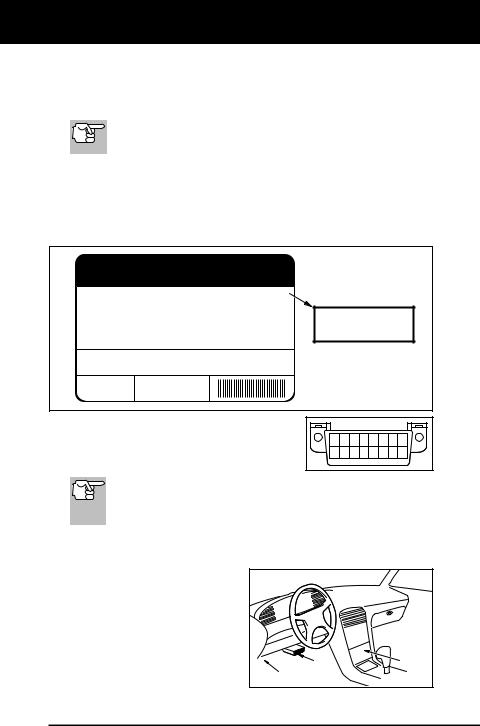
About the Diagnostic Tool
VEHICLES COVERED
VEHICLES COVERED
The Enhanced CanOBD2 Diagnostic Tool is designed to work on all OBD2 compliant vehicles. All 1996 and newer vehicles (cars and light trucks) sold in the United States are OBD2 compliant.
Federal law requires that all 1996 and newer cars and light trucks sold in the United States must be OBD2 compliant; this includes all Domestic, Asian and European vehicles.
Some 1994 and 1995 vehicles are OBD2 compliant. To find out if a 1994 or 1995 vehicle is OBD2 compliant, check the following:
1.The Vehicle Emissions Control Information (VECI) Label. This label is located under the hood or by the radiator of most vehicles. If the vehicle is OBD2 compliant, the label will state “OBD II Certified.”
VEHICLE EMISSION CONTROL INFORMATION
|
ENGINE FAMILY |
EFN2.6YBT2BA |
OBD II |
VEHICLE |
DISPLACEMENT |
2.6L |
CERTIFIED |
THIS VEHICLE CONFORMS TO U.S. EPA AND STATE |
|||
MANUFACTURER |
OF CALIFORNIA REGULATIONS APPLICABLE TO |
||
|
1999 MODEL YEAR NEW TLEV PASSENGER CARS. |
||
|
|
|
|
REFER TO SERVICE MANUAL FOR ADDITIONAL INFORMATION TUNE-UP CONDITIONS: NORMAL OPERATING ENGINE TEMPERATURE, ACCESSORIES OFF, COOLING FAN OFF, TRANSMISSION IN NEUTRAL
EXHAUST EMISSIONS STANDARDS |
STANDARD CATEGORY |
||
|
|
|
|
CERTIFICATION |
TLEV |
||
IN-USE |
TLEV INTERMEDIATE |
||
SPARK PLUG
TYPE NGK BPRE-11 CATALYST
GAP: 1.1MM
OBD II
CERTIFIED
2.Government Regulations require that all OBD2 compliant vehicles must have a “common” sixteen-pin Data Link Connector (DLC).
1 |
2 |
3 |
4 |
5 |
6 |
7 |
8 |
9 10111213141516 |
|||||||
Some 1994 and 1995 vehicles have 16-pin connectors but are not OBD2 compliant. Only those vehicles with a Vehicle Emissions Control Label stating “OBD II Certified” are OBD2 compliant.
Data Link Connector (DLC) Location
The 16-pin DLC is usually |
|
|
|||||||
located |
under |
the |
instrument |
|
|
||||
panel (dash), within 12 inches |
|
|
|||||||
(300 mm) of center of the panel, |
|
|
|||||||
on the driver’s side of most |
|
|
|||||||
vehicles. |
It |
should |
be |
easily |
|
|
|||
accessible |
and |
visible |
from |
a |
|
|
|||
kneeling |
position outside the |
NEAR |
BEHIND |
||||||
CENTER |
ASHTRAY |
||||||||
vehicle with the door open. |
|
||||||||
|
LEFT CORNER OF DASH |
|
|||||||
|
|
|
|
|
|
|
OF DASH |
|
|
Craftsman 87702 |
5 |

About the Diagnostic Tool
BATTERY REPLACEMENT
On some Asian and European vehicles the DLC is located behind the “ashtray” (the ashtray must be removed to access it) or on the far left corner of the dash. If the DLC cannot be located, consult the vehicle’s service manual for the location.
BATTERY REPLACEMENT
Replace batteries when the battery symbol  is visible on display and/or the 3 LEDS are all lit and no other data is visible on screen.
is visible on display and/or the 3 LEDS are all lit and no other data is visible on screen.
1.Locate the battery cover on the back of the Diagnostic Tool.
2.Slide the battery cover off (use your fingers).
3.Replace batteries with two AA-size batteries (for longer life, use Alkaline-type batteries).
4.Reinstall the battery cover on the back of the Diagnostic Tool.
Adjustments After Battery Installation
The first time the unit is turned on, you must select the desired display language (English, French or Spanish) and unit of measurement (USA or Metric) as follows:
1. |
Press the POWER/LINK |
button to |
|
|
turn the Diagnostic Tool “ON.” |
|
|
|
The Select Language screen |
||
|
displays. |
|
|
2. |
Use the DOWN |
button to |
highlight |
|
the desired display language. |
|
|
3. |
When the desired display language is |
||
selected, press the ENTER  button to confirm your selection.
button to confirm your selection.
The Select Unit screen displays.
4.Use the DOWN  button to highlight the desired unit of measurement.
button to highlight the desired unit of measurement.
5.When the desired unit of measurement is selected, press the ENTER  button to confirm your selection.
button to confirm your selection.
After the initial language and unit of measurement selections are performed, these, as well as other settings, can be changed as desired. Proceed to “ADJUSTMENTS AND SETTINGS” on page 60 for further instructions.
6 |
Craftsman 87702 |
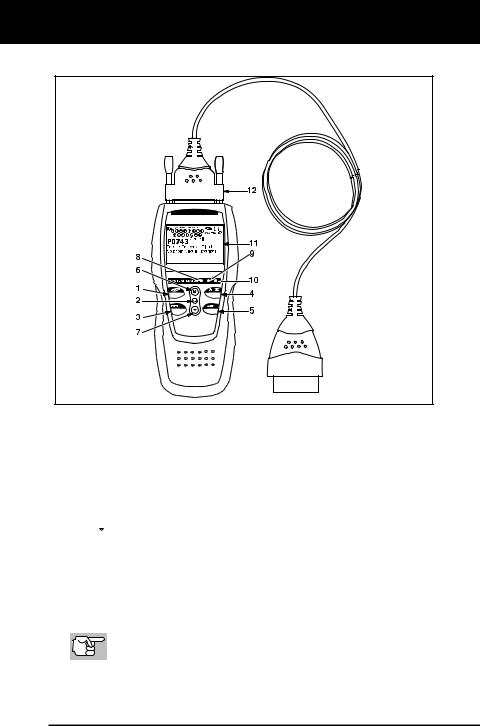
Diagnostic Tool Controls
CONTROLS AND INDICATORS
CONTROLS AND INDICATORS
Figure 1. Controls and Indicators
See Figure 1 for the locations of items 1 through 12, below.
1. ERASE button - Erases Diagnostic Trouble Codes (DTCs), and “Freeze Frame” data from your vehicle’s computer, and resets Monitor status.
ERASE button - Erases Diagnostic Trouble Codes (DTCs), and “Freeze Frame” data from your vehicle’s computer, and resets Monitor status.
2. ENTER button - When in Menu mode, confirms the selected option or value.
ENTER button - When in Menu mode, confirms the selected option or value.
3. DTC button - Displays the DTC View screen and/or scrolls the LCD display to view DTCs.
DTC button - Displays the DTC View screen and/or scrolls the LCD display to view DTCs.
4. POWER/LINK button - When the Diagnostic Tool IS NOT connected to a vehicle, turns the Diagnostic Tool “On” and “Off”. When the Diagnostic Tool is connected to a vehicle, links the Diagnostic Tool to the vehicle’s PCM to retrieve diagnostic data from the computer’s memory.
POWER/LINK button - When the Diagnostic Tool IS NOT connected to a vehicle, turns the Diagnostic Tool “On” and “Off”. When the Diagnostic Tool is connected to a vehicle, links the Diagnostic Tool to the vehicle’s PCM to retrieve diagnostic data from the computer’s memory.
To turn the Diagnostic Tool "On", you must press and hold the POWER/LINK  button for approximately 3 seconds.
button for approximately 3 seconds.
5. ABS button - When pressed, displays the ABS DTCs menu.
ABS button - When pressed, displays the ABS DTCs menu.
6. M button – When pressed while linked to a vehicle, displays the “Main Menu.”
M button – When pressed while linked to a vehicle, displays the “Main Menu.”
Craftsman 87702 |
7 |

Diagnostic Tool Controls
CONTROLS AND INDICATORS
7. DOWN button - When in MENU mode, scrolls DOWN through the menu and submenu selection options. When retrieving and viewing DTCs, scrolls down through the current display screen to display any additional data.
DOWN button - When in MENU mode, scrolls DOWN through the menu and submenu selection options. When retrieving and viewing DTCs, scrolls down through the current display screen to display any additional data.
8.GREEN LED - Indicates that all engine systems are running normally (all Monitors on the vehicle are active and performing their diagnostic testing, and no DTCs are present).
9.YELLOW LED - Indicates there is a possible problem. A “Pending” DTC is present and/or some of the vehicle’s emission monitors have not run their diagnostic testing.
10.RED LED - Indicates there is a problem in one or more of the vehicle’s systems. The red LED is also used to show that DTC(s) are present. DTCs are shown on the Diagnostic Tool’s LCD display. In this case, the Malfunction Indicator (“Check Engine”) lamp on the vehicle’s instrument panel will light steady on.
11.LCD Display - Displays settings Menu and submenus, test results, Diagnostic Tool functions and Monitor status information. See DISPLAY FUNCTIONS, on next page, for more details.
12.CABLE - Connects the Diagnostic Tool to the vehicle’s Data Link Connector (DLC).
8 |
Craftsman 87702 |
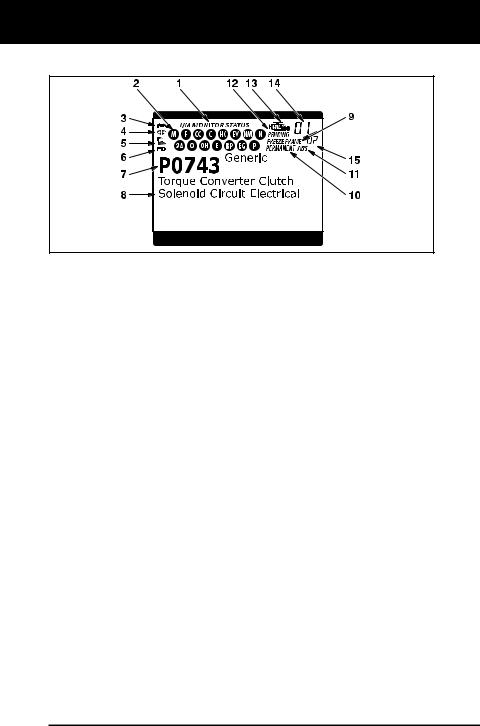
Diagnostic Tool Controls
DISPLAY FUNCTIONS
DISPLAY FUNCTIONS
Figure 2. Display Functions
See Figure 2 for the locations of items 1 through 14, below.
1.I/M MONITOR STATUS field - Identifies the I/M Monitor status area.
2.Monitor icons - Indicate which Monitors are supported by the vehicle under test, and whether or not the associated Monitor has run its diagnostic testing (Monitor status). When a Monitor icon is solid, it indicates that the associated Monitor has completed its diagnostic testing. When a Monitor icon is flashing, it indicates that the vehicle supports the associated Monitor, but the Monitor has not yet run its diagnostic testing.
3. Vehicle icon - Indicates whether or not the Diagnostic Tool is being properly powered through the vehicle’s Data Link Connector (DLC). A visible icon indicates that the Diagnostic Tool is being powered through the vehicle’s DLC connector.
Vehicle icon - Indicates whether or not the Diagnostic Tool is being properly powered through the vehicle’s Data Link Connector (DLC). A visible icon indicates that the Diagnostic Tool is being powered through the vehicle’s DLC connector.
4. Link icon - Indicates whether or not the Diagnostic Tool is communicating (linked) with the vehicle’s on-board computer. When visible, the Diagnostic Tool is communicating with the computer. If the Link icon is not visible, the Diagnostic Tool is not communicating with the computer.
Link icon - Indicates whether or not the Diagnostic Tool is communicating (linked) with the vehicle’s on-board computer. When visible, the Diagnostic Tool is communicating with the computer. If the Link icon is not visible, the Diagnostic Tool is not communicating with the computer.
5. Computer icon - When this icon is visible it indicates that the Diagnostic Tool is linked to a personal computer. Optional software is available that makes it possible to upload retrieved data to a personal computer.
Computer icon - When this icon is visible it indicates that the Diagnostic Tool is linked to a personal computer. Optional software is available that makes it possible to upload retrieved data to a personal computer.
6. Diagnostic Tool Internal Battery icon - When visible, indicates the Diagnostic Tool batteries are “low” and should be replaced. If the batteries are not replaced when the battery symbol
Diagnostic Tool Internal Battery icon - When visible, indicates the Diagnostic Tool batteries are “low” and should be replaced. If the batteries are not replaced when the battery symbol  is "on", all 3 LEDs will light up as a last resort indicator to warn you that the batteries need replacement. No data will be displayed on screen when all 3 LEDs are lit.
is "on", all 3 LEDs will light up as a last resort indicator to warn you that the batteries need replacement. No data will be displayed on screen when all 3 LEDs are lit.
Craftsman 87702 |
9 |

Diagnostic Tool Controls
DISPLAY FUNCTIONS
7.DTC Display Area - Displays the Diagnostic Trouble Code (DTC) number. Each fault is assigned a code number that is specific to that fault.
8.Test Data Display Area - Displays DTC definitions, Freeze Frame data, and other pertinent test information messages.
9.FREEZE FRAME icon - Indicates that there is Freeze Frame data from “Priority Code” (Code #1) stored in the vehicle’s computer memory.
10.PERMANENT icon - Indicates the currently displayed DTC is a “Permanent” code.
11.ABS icon – Indicates the currently displayed DTC is an “ABS” code.
12.PENDING icon - Indicates the currently displayed DTC is a “Pending” code.
13.MIL icon - Indicates the status of the Malfunction Indicator Lamp (MIL). The MIL icon is visible only when a DTC has commanded the MIL on the vehicle’s dashboard to light.
14.Code Number Sequence - The Diagnostic Tool assigns a sequence number to each DTC that is present in the computer’s memory, starting with “01.” This number indicates which code is currently displayed. Code number “01” is always the highest priority code, and the one for which “Freeze Frame” data has been stored.
If “01” is a “Pending” code, there may or may not be “Freeze Frame” data stored in memory.
15.Code Enumerator - Indicates the total number of codes retrieved from the vehicle’s computer.
10 |
Craftsman 87702 |

Onboard Diagnostics
COMPUTER ENGINE CONTROLS
COMPUTER ENGINE CONTROLS
The Introduction of Electronic Engine Controls
Electronic Computer Control Systems make it possible for vehicle manufacturers to comply with the tougher emissions and fuel efficiency standards mandated by State and Federal Governments.
As a result of increased air pollution (smog) in large cities,  such as Los Angeles, the California Air Resources Board
such as Los Angeles, the California Air Resources Board 
 (CARB) and the Environmental Protection Agency (EPA)
(CARB) and the Environmental Protection Agency (EPA) 

 set new regulations and air pollution standards to deal with
set new regulations and air pollution standards to deal with 
 the problem. To further complicate matters, the energy crisis of
the problem. To further complicate matters, the energy crisis of  the early 1970s caused a sharp increase in fuel prices over a
the early 1970s caused a sharp increase in fuel prices over a
short period. As a result, vehicle manufacturers were not only required to comply with the new emissions standards, they also
had to make their vehicles more fuel-efficient. Most vehicles
were required to meet a miles-per-gallon (MPG) standard set by the U.S. Federal Government.
Precise fuel delivery and spark timing are needed to reduce vehicle emissions. Mechanical engine controls in use at the time (such as ignition points, mechanical spark advance and the carburetor) responded too slowly to driving conditions to properly control fuel delivery and spark timing. This made it difficult for vehicle manufacturers to meet the new standards.
A new Engine Control System had to be designed and integrated with the engine controls to meet the stricter standards. The new system had to:
Respond instantly to supply the proper mixture of air and fuel for any driving condition (idle, cruising, low-speed driving, high-speed driving, etc.).
Calculate instantly the best time to “ignite” the air/fuel mixture for maximum engine efficiency.
Perform both these tasks without affecting vehicle performance or fuel economy.
Vehicle Computer Control Systems can perform millions of calculations each second. This makes them an ideal substitute for the slower mechanical engine controls. By switching from mechanical to electronic engine controls, vehicle manufacturers are able to control fuel delivery and spark timing more precisely. Some newer Computer Control Systems also provide control over other vehicle functions, such as transmission, brakes, charging, body, and suspension systems.
Craftsman 87702 |
11 |
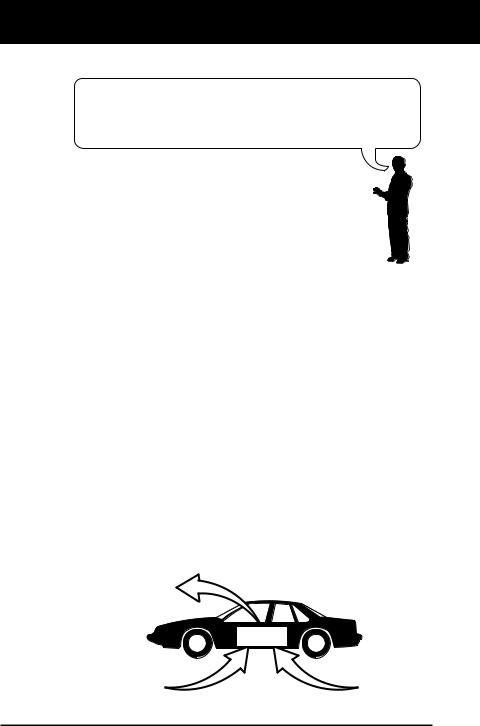
Onboard Diagnostics
COMPUTER ENGINE CONTROLS
The Basic Engine Computer Control System
The Computer Control System consists of an on-board computer and several related control devices (sensors, switches, and actuators).
The on-board computer is the heart of the Computer Control System. The computer contains several programs with preset reference values for air/fuel ratio, spark or 
 ignition timing, injector pulse width, engine speed, etc. Separate values are provided for various driving conditions, such as idle, low speed driving, high-speed driving, low load, or high load. The preset reference values represent the ideal air/fuel mixture, spark timing, transmission gear selection,
ignition timing, injector pulse width, engine speed, etc. Separate values are provided for various driving conditions, such as idle, low speed driving, high-speed driving, low load, or high load. The preset reference values represent the ideal air/fuel mixture, spark timing, transmission gear selection,
etc., for any driving condition. These values are programmed
by the vehicle manufacturer, and are specific to each vehicle model.
Most on-board computers are located inside the vehicle behind the dashboard, under the passenger’s or driver’s seat, or behind the right kick panel. However, some manufacturers may still position it in the engine compartment.
Vehicle sensors, switches, and actuators are located throughout the engine, and are connected by electrical wiring to the on-board computer. These devices include oxygen sensors, coolant temperature sensors, throttle position sensors, fuel injectors, etc. Sensors and switches are input devices. They provide signals representing current engine operating conditions to the computer. Actuators are output devices. They perform actions in response to commands received from the computer.
The on-board computer receives information inputs from sensors and switches located throughout the engine. These devices monitor critical engine conditions such as coolant temperature, engine speed, engine load, throttle position, air/fuel ratio etc.
The computer compares the values received from these sensors with its preset reference values, and makes corrective actions as needed so that the sensor values always match the preset reference values for the current driving condition. The computer makes adjustments by commanding other devices such as the fuel injectors, idle air control, EGR valve or Ignition Module to perform these actions.
OUTPUT DEVICES
Fuel Injectors
Idle Air Control
EGR Valve
Ignition Module
On-Board
Computer
INPUT DEVICES
TYPICAL COMPUTER CONTROL SYSTEM
Coolant Temperature Sensor |
INPUT DEVICES |
Throttle Position Sensor |
Oxygen Sensors |
Fuel Injectors |
|
12 Craftsman 87702

Onboard Diagnostics
COMPUTER ENGINE CONTROLS
Vehicle operating conditions are constantly changing. The computer continuously makes adjustments or corrections (especially to the air/fuel mixture and spark timing) to keep all the engine systems operating within the preset reference values.
On-Board Diagnostics - First Generation (OBD1)
With the exception of some 1994 and 1995 vehicles, most vehicles from 1982 to 1995 are equipped with some type of first generation On-Board Diagnostics.
Beginning in 1988, California’s Air Resources Board
(CARB), and later the Environmental Protection Agency (EPA)
required vehicle manufacturers to include a self-diagnostic
program in their on-board computers. The program would be
capable of identifying emissions-related faults in a system. The
first generation of Onboard Diagnostics came to be known as
OBD1.
 OBD1 is a set of self-testing and diagnostic instructions programmed into the vehicle’s on-board computer. The programs are specifically designed to detect failures in the sensors, actuators, switches and wiring of the various vehicle emissions-related systems. If the computer detects a failure in any of these components or systems, it lights an indicator on the dashboard to alert the driver. The
OBD1 is a set of self-testing and diagnostic instructions programmed into the vehicle’s on-board computer. The programs are specifically designed to detect failures in the sensors, actuators, switches and wiring of the various vehicle emissions-related systems. If the computer detects a failure in any of these components or systems, it lights an indicator on the dashboard to alert the driver. The
indicator lights only when an emissions-related problem is detected.
The computer also assigns a numeric code for each specific problem that it detects, and stores these codes in its memory for later retrieval. These codes can be retrieved from the computer’s memory with the use of a “Diagnostic Tool” or a “Scan Tool.”
On-Board Diagnostics - Second Generation (OBD2)
In addition to performing all the functions of the OBD1 System, the OBD2 System has been enhanced with new Diagnostic Programs. These programs closely monitor the functions of various emissions-related compo-
nents and systems (as well as other
systems) and make this information readily available (with the proper equipment) to the technician for evaluation.
The California Air Resources Board (CARB) conducted studies on OBD1 equipped vehicles. The information that was gathered from these studies showed the following:
A large number of vehicles had deteriorating or degraded emissions-related components. These components were causing an increase in emissions.
Craftsman 87702 |
13 |

Onboard Diagnostics
COMPUTER ENGINE CONTROLS
Because OBD1 systems only detect failed components, the degraded components were not setting codes.
Some emissions problems related to degraded components only occur when the vehicle is being driven under a load. The emission checks being conducted at the time were not performed under simulated driving conditions. As a result, a significant number of vehicles with degraded components were passing Emissions Tests.
Codes, code definitions, diagnostic connectors, communication protocols and emissions terminology were different for each manufacturer. This caused confusion for the technicians working on different make and model vehicles.
To address the problems made evident by this study, CARB and the EPA passed new laws and standardization requirements. These laws required that vehicle manufacturers to equip their new vehicles with devices capable of meeting all of the new emissions standards and regulations. It was also decided that an enhanced on-board diagnostic system, capable of addressing all of these problems, was needed. This new system is known as “On-Board Diagnostics Generation Two (OBD2).” The primary objective of the OBD2 system is to comply with the latest regulations and emissions standards established by CARB and the EPA.
The Main Objectives of the OBD2 System are:
To detect degraded and/or failed emissions-related components or systems that could cause tailpipe emissions to exceed by 1.5 times the Federal Test Procedure (FTP) standard.
To expand emissions-related system monitoring. This includes a set of computer run diagnostics called Monitors. Monitors perform diagnostics and testing to verify that all emissions-related components and/or systems are operating correctly and within the manufacturer’s specifications.
To use a standardized Diagnostic Link Connector (DLC) in all vehicles. (Before OBD2, DLCs were of different shapes and sizes.)
To standardize the code numbers, code definitions and language used to describe faults. (Before OBD2, each vehicle manufacturer used their own code numbers, code definitions and language to describe the same faults.)
To expand the operation of the Malfunction Indicator Lamp (MIL).
To standardize communication procedures and protocols between the diagnostic equipment (Scan Tools, Code Readers, etc.) and the vehicle’s on-board computer.
OBD2 Terminology
The following terms and their definitions are related to OBD2 systems. Read and reference this list as needed to aid in the understanding of OBD2 systems.
14 |
Craftsman 87702 |

Onboard Diagnostics
COMPUTER ENGINE CONTROLS
Powertrain Control Module (PCM) - The PCM is the OBD2 accepted term for the vehicle’s “on-board computer.” In addition to controlling the engine management and emissions systems, the PCM also participates in controlling the powertrain (transmission) operation. Most PCMs also have the ability to communicate with other computers on the vehicle (ABS, ride control, body, etc.).
Monitor - Monitors are “diagnostic routines” programmed into the PCM. The PCM utilizes these programs to run diagnostic tests, and to monitor operation of the vehicle’s emissions-related components or systems to ensure they are operating correctly and within the vehicle’s manufacturer specifications. Currently, up to fifteen Monitors are used in OBD2 systems. Additional Monitors will be added as the OBD2 system is further developed.
Not all vehicles support all fifteen Monitors.
Enabling Criteria - Each Monitor is designed to test and monitor the operation of a specific part of the vehicle’s emissions system (EGR system, oxygen sensor, catalytic converter, etc.). A specific set of “conditions” or “driving procedures” must be met before the computer can command a Monitor to run tests on its related system. These “conditions” are known as “Enabling Criteria.” The requirements and procedures vary for each Monitor. Some Monitors only require the ignition key to be turned “On” for them to run and complete their diagnostic testing. Others may require a set of complex procedures, such as, starting the vehicle when cold, bringing it to operating temperature, and driving the vehicle under specific conditions before the Monitor can run and complete its diagnostic testing.
Monitor Has/Has Not Run - The terms “Monitor has run” or “Monitor has not run” are used throughout this manual. “Monitor has run,” means the PCM has commanded a particular Monitor to perform the required diagnostic testing on a system to ensure the system is operating correctly (within factory specifications). The term “Monitor has not run” means the PCM has not yet commanded a particular Monitor to perform diagnostic testing on its associated part of the emissions system.
Trip - A Trip for a particular Monitor requires that the vehicle is being driven in such a way that all the required “Enabling Criteria” for the Monitor to run and complete its diagnostic testing are met. The “Trip Drive Cycle” for a particular Monitor begins when the ignition key is turned “On.” It is successfully completed when all the “Enabling Criteria” for the Monitor to run and complete its diagnostic testing are met by the time the ignition key is turned “Off.” Since each of the eleven monitors is designed to run diagnostics and testing on a different part of the engine or emissions system, the “Trip Drive Cycle” needed for each individual Monitor to run and complete varies.
Craftsman 87702 |
15 |

Onboard Diagnostics
DIAGNOSTIC TROUBLE CODES (DTCs)
OBD2 Drive Cycle - An OBD2 Drive Cycle is an extended set of driving procedures that takes into consideration the various types of driving conditions encountered in real life. These conditions may include starting the vehicle when it is cold, driving the vehicle at a steady speed (cruising), accelerating, etc. An OBD2 Drive Cycle begins when the ignition key is turned “On” (when cold) and ends when the vehicle has been driven in such a way as to have all the “Enabling Criteria” met for all its applicable Monitors. Only those trips that provide the Enabling Criteria for all Monitors applicable to the vehicle to run and complete their individual diagnostic tests qualify as an OBD2 Drive Cycle. OBD2 Drive Cycle requirements vary from one model of vehicle to another. Vehicle manufacturers set these procedures. Consult your vehicle’s service manual for OBD2 Drive Cycle procedures.
Do not confuse a “Trip” Drive Cycle with an OBD2 Drive Cycle. A “Trip” Drive Cycle provides the “Enabling Criteria” for one specific Monitor to run and complete its diagnostic testing. An OBD2 Drive Cycle must meet the “Enabling Criteria” for all Monitors on a particular vehicle to run and complete their diagnostic testing.
Warm-up Cycle - Vehicle operation after an engine off period where engine temperature rises at least 40°F (22°C) from its temperature before starting, and reaches at least 160°F (70°C). The PCM uses warm-up cycles as a counter to automatically erase a specific code and related data from its memory. When no faults related to the original problem are detected within a specified number of warm-up cycles, the code is erased automatically.
DIAGNOSTIC TROUBLE CODES (DTCs)
Diagnostic Trouble Codes (DTCs) are meant to guide you to the proper service procedure in the vehicle’s service manual. DO NOT replace parts based only on DTCs without first consulting the vehicle’s service manual for proper testing procedures for that particular system, circuit or component.
Diagnostic Trouble Codes (DTCs) are codes that identify a specific problem area.
DTCs are alphanumeric codes that are used to identify a problem that is present in any of the systems that are monitored by the on-board computer (PCM). Each trouble code has an assigned message that identifies the circuit, component or system area where the problem was found.
OBD2 diagnostic trouble codes are made up of five characters:
The 1st character is a letter (B, C, P or U). It identifies the
“main system” where the fault occurred (Body, Chassis, Powertrain, or Network).
The 2nd character is a numeric digit (0 thru 3). It identifies the “type” of code (Generic or Manufacturer-Specific).
Generic DTCs are codes that are used by all vehicle manufacturers. The standards for generic DTCs, as well as their definitions, are set by the Society of Automotive Engineers (SAE).
16 |
Craftsman 87702 |
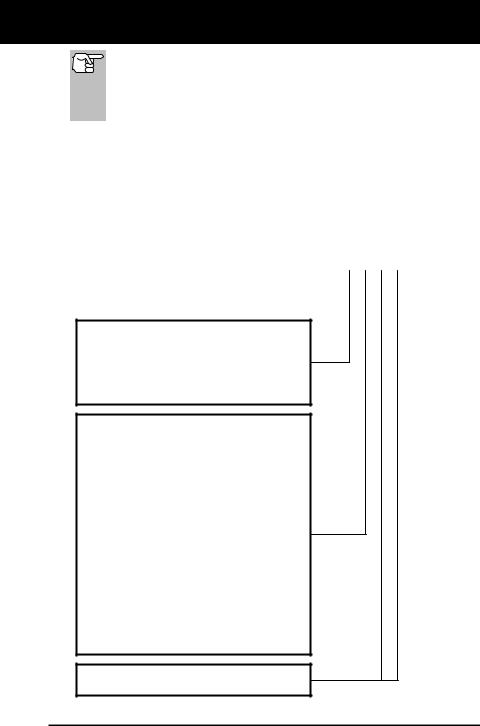
Onboard Diagnostics
DIAGNOSTIC TROUBLE CODES (DTCs)
Manufacturer-Specific DTCs are codes that are controlled by the vehicle manufacturers. The Federal Government does not require vehicle manufacturers to go beyond the standardized generic DTCs in order to comply with the new OBD2 emissions standards. However, manufacturers are free to expand beyond the standardized codes to make their systems easier to diagnose.
The 3rd character is a letter or a numeric digit (0 thru 9, A thru F). It identifies the specific system or sub-system where the problem is located.
The 4th and 5th characters are letters or numeric digits (0 thru 9, A thru F). They identify the section of the system that is malfunctioning.
OBD2 DTC EXAMPLE
P0201 - Injector Circuit Malfunction, Cylinder 1
B - Body |
|
P 0 2 0 1 |
|||||||||
C - Chassis |
|
|
|
|
|
|
|
|
|
|
|
P - Powertrain |
|
|
|
|
|
|
|
|
|
|
|
U - Network |
|
|
|
|
|
|
|
|
|
|
|
0 - Generic
1 - Manufacturer Specific
2- Generic ("P" Codes) and Manufacturer Specific ("B", "C" and "U" Codes)
3- Includes both Generic and Manufacturer Specific Codes
Identifies the system where the problem is located. "P" Code systems are listed below. "B", "C" and "U" Code systems will vary.
0- Fuel and Air Metering; Auxiliary Emission Controls
1- Fuel and Air Metering
2- Fuel and Air Metering (injector circuit malfunction only)
3- Ignition System or Misfire
4- Auxiliary Emission Control System
5- Vehicle Speed Control and Idle Control System
6- Computer Output Circuits
7- Transmission
8- Transmission
9- Transmission
A - Hybrid Propulsion
B - Hybrid Propulsion
C - Hybrid Propulsion
Identifies what section of the system is malfunctioning
Craftsman 87702 |
17 |

Onboard Diagnostics
DIAGNOSTIC TROUBLE CODES (DTCs)
DTCs and MIL Status
When the vehicle’s on-board computer detects a failure in an emissions-related component or system, the computer’s internal diagnostic
program assigns a diagnostic trouble code (DTC) that points to the system (and subsystem)
where the fault was found. The diagnostic program saves the code in the computer’s memory. It records a “Freeze Frame” of condi-
tions present when the fault was found, and lights the Malfunction Indicator Lamp (MIL). Some faults require detection for two trips in a row before the MIL is turned on.
The “Malfunction Indicator Lamp” (MIL) is the accepted term used to describe the lamp on the dashboard that lights to warn the driver that an emissions-related fault has been found. Some manufacturers may still call this lamp a “Check Engine” or “Service Engine Soon” light.
There are two types of DTCs used for emissions-related faults: Type “A” and Type “B.” Type “A” codes are “One-Trip” codes; Type “B” DTCs are usually Two-Trip DTCs.
When a Type “A” DTC is found on the First Trip, the following events take place:
The computer commands the MIL “On” when the failure is first found.
If the failure causes a severe misfire that may cause damage to the catalytic converter, the MIL “flashes” once per second. The MIL continues to flash as long as the condition exists. If the condition that caused the MIL to flash is no longer present, the MIL will light “steady” On.
A DTC is saved in the computer’s memory for later retrieval.
A “Freeze Frame” of the conditions present in the engine or emissions system when the MIL was ordered “On” is saved in the computer’s memory for later retrieval. This information shows fuel system status (closed loop or open loop), engine load, coolant temperature, fuel trim value, MAP vacuum, engine RPM and DTC priority.
When a Type “B” DTC is found on the First Trip, the following events take place:
The computer sets a Pending DTC, but the MIL is not ordered “On.” “Freeze Frame” data may or may not be saved at this time depending on manufacturer. The Pending DTC is saved in the computer’s memory for later retrieval.
If the failure is found on the second consecutive trip, the MIL is ordered “On.” “Freeze Frame” data is saved in the computer’s memory.
If the failure is not found on the second Trip, the Pending DTC is erased from the computer’s memory.
The MIL will stay lit for both Type “A” and Type “B” codes until one of the following conditions occurs:
18 |
Craftsman 87702 |

Onboard Diagnostics
OBD2 MONITORS
If the conditions that caused the MIL to light are no longer present for the next three trips in a row, the computer automatically turns the MIL “Off” if no other emissions-related faults are present. However, the DTCs remain in the computer’s memory as a history code for 40 warm-up cycles (80 warm-up cycles for fuel and misfire faults). The DTCs are automatically erased if the fault that caused them to be set is not detected again during that period.
Misfire and fuel system faults require three trips with “similar conditions” before the MIL is turned “Off.” These are trips where the engine load, RPM and temperature are similar to the conditions present when the fault was first found.
After the MIL has been turned off, DTCs and Freeze Frame data stay in the computer’s memory.
Erasing the DTCs from the computer’s memory can also turn off the MIL. See ERASING DIAGNOSTIC TROUBLE CODES (DTCs) on page 49, before erasing codes from the computer’s memory. If a Diagnostic Tool or Scan Tool is used to erase the codes, Freeze Frame data will also be erased.
OBD2 MONITORS
To ensure the correct operation of the various emissions-related components and systems, a diagnostic program was developed and installed in the vehicle’s on-board computer. The program has several procedures and diagnostic strategies. Each procedure or diagnostic strategy is made to monitor the operation of, and run diagnostic tests on, a specific emissions-related component or system. These tests ensure the system is running correctly and is within the manufacturer’s specifications. On OBD2 systems, these procedures and diagnostic strategies are called “Monitors.”
Currently, fifteen Monitors are supported by OBD2 systems. Additional monitors may be added as a result of Government regulations as the OBD2 system grows and matures. Not all vehicles support all fifteen Monitors. Additionally, some Monitors are supported by “spark ignition” vehicles only, while others are supported by “compression ignition” vehicles only.
Monitor operation is either “Continuous” or “Non-Continuous,” depending on the specific monitor.
Continuous Monitors
Three of these Monitors are designed to constantly monitor their associated components and/or systems for proper operation. Continuous Monitors run constantly when the engine is running. The Continuous Monitors are:
 Comprehensive Component Monitor (CCM)
Comprehensive Component Monitor (CCM)
 Misfire Monitor
Misfire Monitor
 Fuel System Monitor
Fuel System Monitor
Craftsman 87702 |
19 |
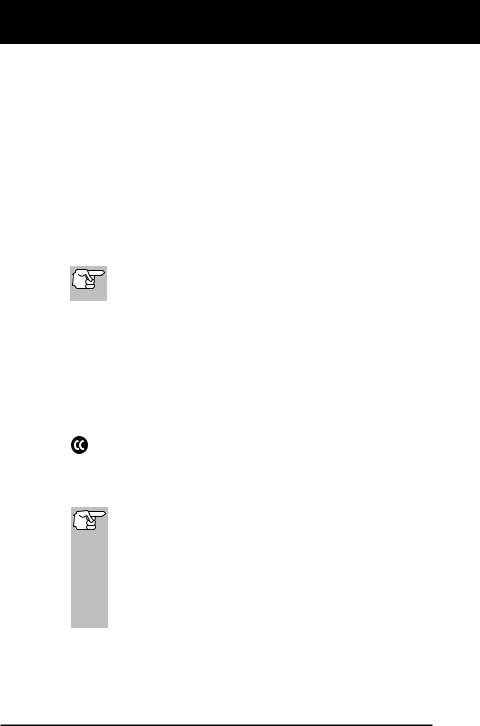
Onboard Diagnostics
OBD2 MONITORS
Non-Continuous Monitors
The other twelve Monitors are “non-continuous” Monitors. “Noncontinuous” Monitors perform and complete their testing once per trip. The “non-continuous” Monitors are:
 Oxygen Sensor Monitor
Oxygen Sensor Monitor
 Oxygen Sensor Heater Monitor
Oxygen Sensor Heater Monitor
 Catalyst Monitor
Catalyst Monitor
 Heated Catalyst Monitor
Heated Catalyst Monitor
 EGR System Monitor
EGR System Monitor
 EVAP System Monitor
EVAP System Monitor
 Secondary Air System Monitor
Secondary Air System Monitor
The following Monitors became standard beginning in 2010. The majority of vehicles produced before this time will not support these Monitors
 NMHC Monitor
NMHC Monitor
 NOx Adsorber Monitor
NOx Adsorber Monitor
 Boost Pressure System Monitor
Boost Pressure System Monitor
 Exhaust Gas Sensor Monitor
Exhaust Gas Sensor Monitor
 PM Filter Monitor
PM Filter Monitor
The following provides a brief explanation of the function of each Monitor:
Comprehensive Component Monitor (CCM) - This Monitor continuously checks all inputs and outputs from sensors, actuators, switches and other devices that provide a signal to the computer. The Monitor checks for shorts, opens, out of range value,
functionality and “rationality.”
Rationality: Each input signal is compared against all other inputs and against information in the computer’s memory to see if it makes sense under the current operating conditions. Example: The signal from the throttle position sensor indicates the vehicle is in a wide-open throttle condition, but the vehicle is really at idle, and the idle condition is confirmed by the signals from all other sensors. Based on the input data, the computer determines that the signal from the throttle position sensor is not rational (does not make sense when compared to the other inputs). In this case, the signal would fail the rationality test.
The CCM is supported by both “spark ignition” vehicles and “compression ignition” vehicles. The CCM may be either a “One-Trip” or a “Two-Trip” Monitor, depending on the component.
20 |
Craftsman 87702 |

Onboard Diagnostics
OBD2 MONITORS
Fuel System Monitor - This Monitor uses a Fuel System Correction program, called Fuel Trim, inside the on-board computer. Fuel Trim is a set of positive and negative values that represent adding or subtracting fuel from the engine. This program is used to correct for a lean (too much air/not enough fuel) or rich (too much fuel/not enough air) air-fuel mixture. The program is designed to add or subtract fuel, as needed, up to a certain percent. If the correction needed is too large and exceeds the time and percent allowed by the
program, a fault is indicated by the computer.
The Fuel System Monitor is supported by both “spark ignition” vehicles and “compression ignition” vehicles. The Fuel System Monitor may be a “One-Trip” or “Two-Trip” Monitor, depending on the severity of the problem.
Misfire Monitor - This Monitor continuously checks for engine misfires. A misfire occurs when the air-fuel mixture in the cylinder does not ignite.
The misfire Monitor uses changes in crankshaft speed to sense an engine misfire. When a cylinder misfires, it no longer contributes to the speed of the engine, and engine speed decreases each time the affected cylinder(s) misfire. The misfire Monitor is designed to sense engine speed fluctuations and determine from which cylinder(s) the misfire is coming, as well as how bad the misfire is. There are three types of engine misfires, Types 1, 2, and 3.
-Type 1 and Type 3 misfires are two-trip monitor faults. If a fault is sensed on the first trip, the computer temporarily saves the fault in its memory as a Pending Code. The MIL is not commanded on at this time. If the fault is found again on the second trip, under similar conditions of engine speed, load and temperature, the computer commands the MIL “On,” and the code is saved in its long term memory.
-Type 2 misfires are the most severe type of misfire. When a Type 2 misfire is sensed on the first trip, the computer commands the MIL to light when the misfire is sensed. If the computer determines that a Type 2 misfire is severe , and may cause catalytic converter damage, it commands the MIL to “flash” once per second as soon as the misfire is sensed. When the misfire is no longer present, the MIL reverts to steady “On” condition.
The Misfire Monitor is supported by both “spark ignition” vehicles and “compression ignition” vehicles.
Catalyst Monitor - The catalytic converter is a device that is installed downstream of the exhaust manifold. It helps to oxidize (burn) the unburned fuel (hydrocarbons) and partially burned fuel (carbon monoxide) left over from the combustion process. To accomplish this, heat and catalyst materials inside the converter react with the exhaust gases to burn the remaining fuel. Some materials inside the catalytic converter also have the ability to store oxygen, and release it as needed to oxidize hydrocarbons and carbon monoxide. In the process, it reduces vehicle emissions by converting the polluting
gases into carbon dioxide and water.
The computer checks the efficiency of the catalytic converter by monitoring the oxygen sensors used by the system. One sensor is located before (upstream of) the converter; the other is located after (downstream of) the converter. If the catalytic converter loses its ability to store oxygen,
Craftsman 87702 |
21 |

Onboard Diagnostics
OBD2 MONITORS
the downstream sensor signal voltage becomes almost the same as the upstream sensor signal. In this case, the monitor fails the test.
The Catalyst Monitor is supported by “spark ignition” vehicles only. The Catalyst Monitor is a “Two-Trip” Monitor. If a fault is found on the first trip, the computer temporarily saves the fault in its memory as a Pending Code. The computer does not command the MIL on at this time. If the fault is sensed again on the second trip, the computer commands the MIL “On” and saves the code in its long-term memory.
Heated Catalyst Monitor - Operation of the “heated” catalytic converter is similar to the catalytic converter. The main difference is that a heater is added to bring the catalytic converter to its operating
temperature more quickly. This helps reduce emissions by reducing the converter’s down time when the engine is cold. The Heated Catalyst Monitor performs the same diagnostic tests as the catalyst Monitor, and also tests the catalytic converter’s heater for proper operation.
The Heated Catalyst Monitor is supported by “spark ignition” vehicles only. This Monitor is also a “Two-Trip” Monitor.
Exhaust Gas Recirculation (EGR) Monitor - The Exhaust Gas Recirculation (EGR) system helps reduce the formation of Oxides of Nitrogen during combustion. Temperatures above 2500°F cause
nitrogen and oxygen to combine and form Oxides of Nitrogen in the combustion chamber. To reduce the formation of Oxides of Nitrogen, combustion temperatures must be kept below 2500°F. The EGR system recirculates small amounts of exhaust gas back into the intake manifold, where it is mixed with the incoming air/fuel mixture. This reduces combustion temperatures by up to 500°F. The computer determines when, for how long, and how much exhaust gas is recirculated back to the intake manifold. The EGR Monitor performs EGR system function tests at preset times during vehicle operation.
The EGR Monitor is supported by both “spark ignition” vehicles and “compression ignition” vehicles. The EGR Monitor is a “Two-Trip” Monitor. If a fault is found on the first trip, the computer temporarily saves the fault in its memory as a Pending Code. The computer does not command the MIL on at this time. If the fault is sensed again on the second trip, the computer commands the MIL “On,” and saves the code in its long-term memory.
Evaporative System (EVAP) Monitor - OBD2 vehicles are equipped with a fuel Evaporative system (EVAP) that helps prevent fuel vapors from evaporating into the air. The EVAP system carries fumes from the fuel tank to the engine where they are burned during combustion. The EVAP system may consist of a charcoal canister, fuel tank cap, purge solenoid, vent solenoid, flow monitor, leak
detector and connecting tubes, lines and hoses.
Fumes are carried from the fuel tank to the charcoal canister by hoses or tubes. The fumes are stored in the charcoal canister. The computer controls the flow of fuel vapors from the charcoal canister to the engine via a purge solenoid. The computer energizes or de-energizes the purge solenoid (depending on solenoid design). The purge solenoid opens a valve to allow engine vacuum to draw the fuel vapors from the canister
22 |
Craftsman 87702 |
